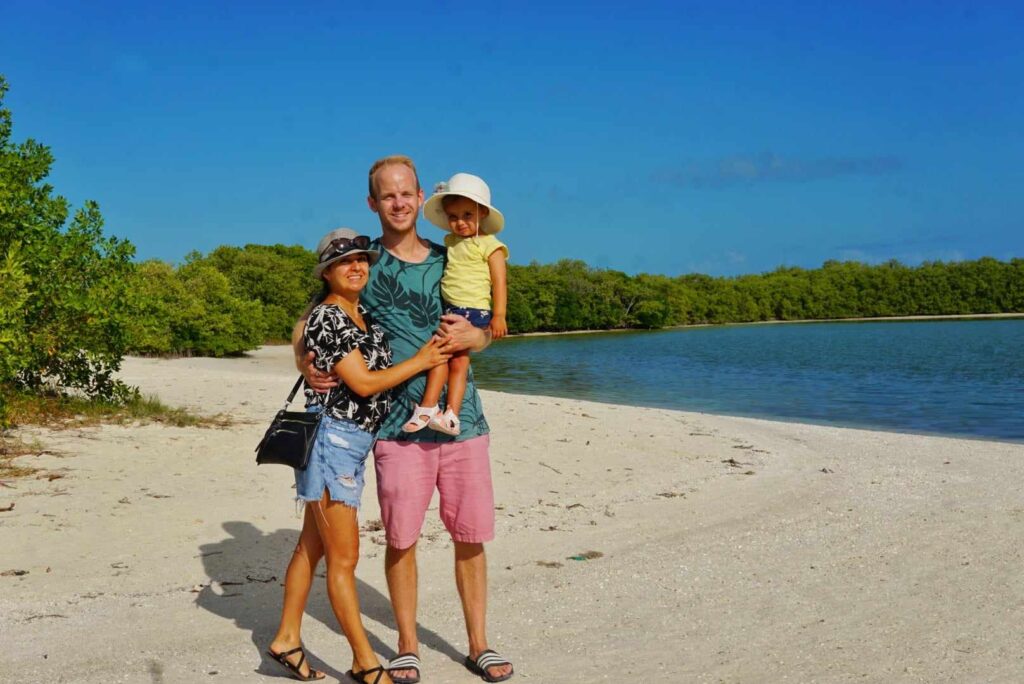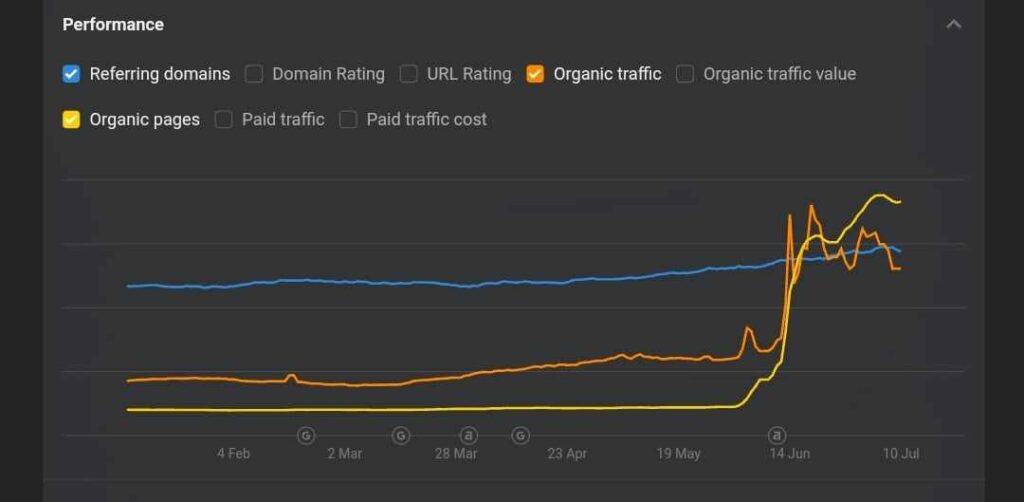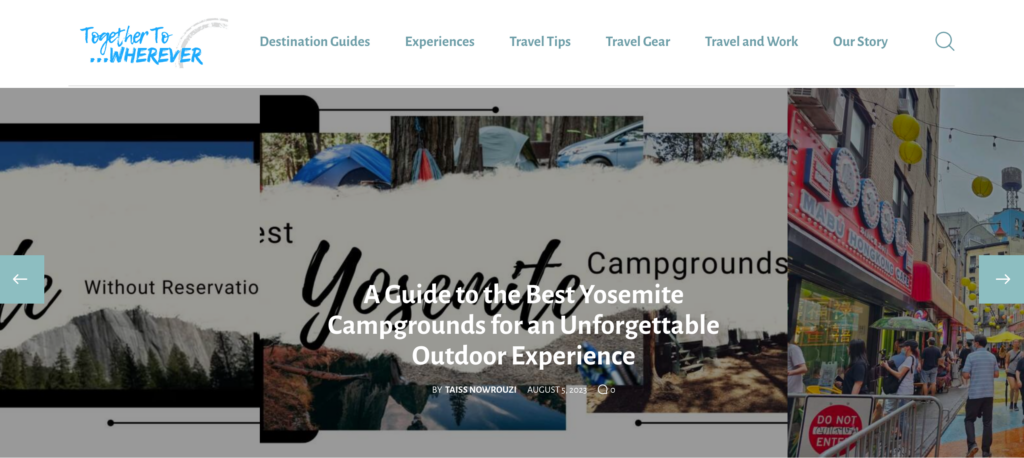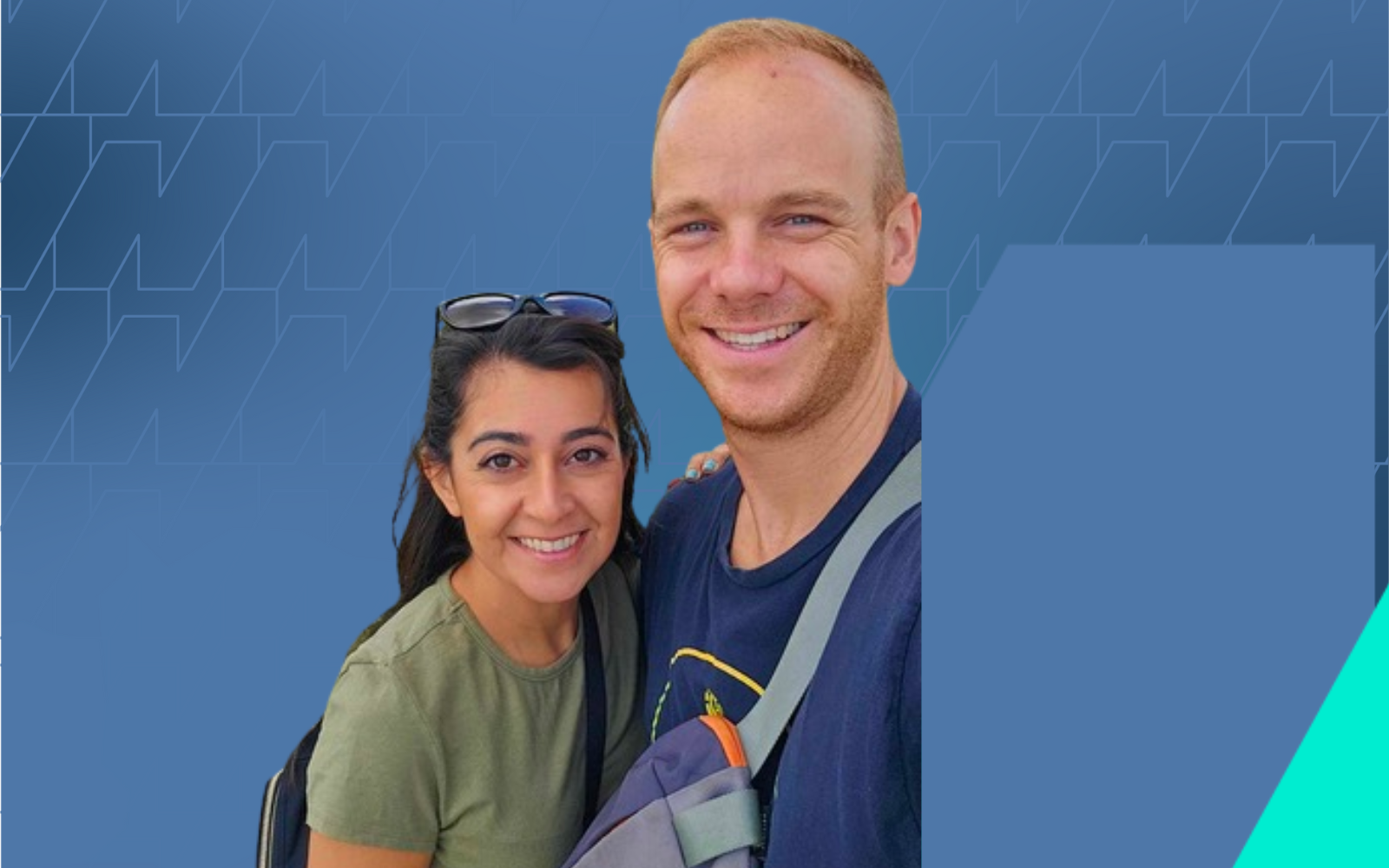How This 36-Year-Old Built and Then Sold His Websites for 5-, 6-, and 7-Figure Exits by Samara Kamenecka
Originally published on www.nichepursuits.com
Success Stories
Back in 2014, Rob Atkinson and Taiss Nowrouzi decided to quit their day jobs and go all-in on mastering SEO. They packed their bags, headed to Chiang Mai, and learned the ins and outs.
From there, Rob began building sites with great success, and then selling them. Since 2014, he has built and sold 5 sites: 3 with a 5-figure exit, 1 with a 6-figure exit, and 1 with a 7-figure exit.
Today he and Taiss run a travel blog and he’s building up a new portfolio of sites. In this interview, he shares a lot of great insight and actionable tips.
Keep reading to find out:
- Why he move to Thailand
- What he learned there
- What types of websites he built and sold
- His main strategy
- How he approaches keyword research
- His content creation process
- The resources and tools he recommends
- His biggest challenge
- His main accomplishment
- His worst mistake
- His advice for other entrepreneurs
Meet Rob and Taiss
I am part of a digital nomad family of three, four if you count our beloved cat, that enjoys traveling the world powered by digital assets.
Back in the day, it was just the two of us (Taiss & I). We both decided to leave our 9-to-5 jobs in 2014, packed our belongings, and relocated to Chiang Mai, Thailand, aspiring to create an online business that would support our remote lifestyle.
My focus was on SEO, and Chiang Mai proved to be an excellent place for networking and learning, with numerous like-minded individuals around.
In 2017, we left Thailand and returned to the US. As a Canadian citizen at the time, all the traveling was straining my US permanent residency, so I needed some time in the US to secure my citizenship.
During that period, we welcomed our daughter, Petra, into the world in 2019. Then, the Covid pandemic disrupted most travel plans, compelling us to remain in the US.

We moved to Mexico in December 2022 and plan to maintain a home base outside the US, making multiple trips around the globe each year.
Rob’s Experience Building and Selling Websites
I have sold a total of 5 websites since starting in 2014. From smallest to largest affiliate site sales, the sites were about the following:
- Marijuana accessory, sold for 5 figures
- Cycling, sold for 5 figures
- Trampoline, sold for 5 figures
- Tactical gear, sold for 6 figures
- SleepAdvisor.org (co-founded with Nemanja Mirkovic), sold for 7 figures
Along the way, there have been many more failure sites than successes. My mindset was mainly about launching multiple projects (planting seeds), watching to see which ones Google liked, then putting my foot on the gas when one was showing promise.
In the early days (2014-2017), I usually had 2 to 3 sites going at one time. SleepAdvisor.org launched in 2017 and became the sole focus until the site was sold in March 2022.
For the first 4 websites, I used brokers to help me sell. The first site I sold was on Flippa and the next 3 on Empire Flippers. We sold Sleep Advisor privately.
His Current Income
As for my current income as an entrepreneur, I only have one affiliate site left in the portfolio since the Sleep Advisor exit. This website brings in around $1,000/mo.
In addition, Taiss (my wife) runs our travel blog, Together to Wherever (originally named Together in Thailand), which was launched to document our digital nomad travel lifestyle.


The website has picked up steam in recent months and will become a major focus for us in the coming years. It currently earns around $200 per month. In addition, the Instagram following has led to a lot of free trips and stays around the world.
We have a small team of freelancers that help out with Together To Wherever and the other websites we are launching. It’s two freelance writers and someone that helps with WordPress formatting.
I work about 25 hours per week on my business, with 20 of those hours being highly focused deep work sessions (no email, distractions, etc).
Rob’s Main Marketing Strategy
My number one marketing strategy has always been SEO. Although I recognize the need to diversify and shield against Google’s algorithm updates, SEO has been the strategy that gets my sites launched and monetized.
I learned SEO by accident.
I started a website in 2013 about fantasy golf. Each week, I would write about which players I thought people should choose for their lineups. Then out of nowhere, I saw a blast of traffic coming in.
I quickly realized that I had accidentally optimized my content for the tournament each week and was ranking well. It opened my eyes and that led me to join an SEO course named “Bring The Fresh.”
After that initial course, I stumbled upon Niche Pursuits and followed the case study with Perrin. That case study opened my eyes, and from there I convinced my girlfriend at the time (now wife) to quit our jobs and move to Thailand!
Chiang Mai, Thailand was a pivotal time and helped launch the SEO business. The SEO community is so strong, and it helps to meet up with like-minded folks every week in person.
His Thoughts on SEO
SEO is indeed the cornerstone of my business. The best SEO tip I could give was passed along to me by my coach at the time, Matt Diggity.
It was 2015 and I had booked a private coaching session with him. My sites were stuck. He took a look at my content and found something. I pushed back against his view and he said something to the effect of, “Do you think Google cares that you think your content is good? Remember, Google is an algorithm.”
That stuck with me.
While I’m not suggesting that you should try to deliver bad content to your readers, just remember you are playing against an algorithm. If you want to win in SEO, you must accept that fact and not get emotionally tied up in, “But, I had an expert write this content so why am I getting a penalty.”
It’s a computer algorithm.
Test ideas, receive feedback, and feed it what you believe it wants in order to rank well.
Keyword Research
My keyword research strategy is rather simple and hasn’t changed much over the years. I look for existing websites doing well in our niche, input them into Ahrefs, and construct a list of keywords to target from there.
Once I have a list of keywords, it’s time to organize it into proper silos (categories). Sometimes, you’ll have multiple keywords that a competitor targets with separate pages, however, the topics are closely aligned.
I check each SERP manually and decide when it’s right to combine similar (overlapping) keywords. When in doubt, I recommend targeting a larger page with more keywords rather than a ton of sniper (smaller) pages for each keyword variation.
Link Building
Link building has consistently been vital to my success. While I know many SEOs have tremendous success without link building, I believe that if it’s done correctly, it can significantly boost earnings.
My main link building strategy has been good ole’ content marketing.
I find topics where I think people would be happy to link. Then I create the best piece of content on the topic with the goal of bringing as much value to that group of people as possible. Then I perform our outreach campaigns and have been able to land links mostly without paying for them.
I’ve tried paying for guest post services and that never seems to move the needle, so I stopped.
His Content Creation Process
My content creation process starts slowly when launching a new website.
Initially, I typically publish 1 to 2 high-quality articles per week. Once the site gains momentum, I establish systems around research and content production to accelerate the process.
I define momentum as the time when you’re in the “Google loves me” zone. As mentioned previously, I ditch sites that stall or have a hard time taking off.
When I see that a website consistently sees an increase in impressions and traffic early on, I start to pour more resources into the project.
I don’t have an exact blueprint for this as it’s mostly based on gut feel. When a website you own is in the momentum stage you will likely know. When it does, I would highly suggest taking inventory of the other projects you have going on and consider allocating more or most of your time to the site with momentum.
When the publication schedule picks up it’s also time to outsource and automate the process.
When Sleep Advisor started to gain momentum, we hired writers, developers/designers, and someone to complete the on-page SEO before it went live.
His Top Resources
If you’re just starting to think about becoming an entrepreneur, then read the Millionaire Fastlane. It’s like the Matrix: it gives you an overview of how the world works and the mechanics behind making money.
There are probably 5 to 10 other books that I’ve read that have made a huge impact on my entrepreneurial growth. A few that come to mind are:
- The One Thing
- The Magic of Thinking Big
- Getting Things Done
His Go-To Tools
Trello: My boards are set up based on the book Getting Things Done, by David Allen. I have been doing this since 2018, and it’s an absolute game-changer when it comes to staying organized.
Slack: A communication tool that I use daily to interact with my team. It has multiple channels and threads, which helps eliminate too many messages at one time.
Roost Stand: I’ve had my laptop stand since 2016, and as a digital nomad, it’s priceless. I can set up in any Airbnb or coffee shop and not have to worry about neck pain from looking down at my laptop from a weird angle.
Rob’s Biggest Challenge
That would have to be building a remote team. At one point, the mattress website had roughly 25 employees. I’m an entrepreneur at heart and add the most value when I’m immersed in things like SEO.
As the team grew, the responsibilities to manage it did as well. That sucks the time away to thrive on the creative aspects of the business.
We grew our team in many different ways.
Our first full-time writer was someone Taiss and I met while exploring Petra, Jordan. I reached out to her and she was interested in the role.
From there, she connected us with our next full-time writer. Our content team was built mainly through connections like this.
Our development and design team was built with a team in Serbia. My co-founder ran an agency before we joined up and was able to bring that team together to Sleep Advisor.
Outside of that, we tried common places like Upwork and Indeed. Everyone that started with us was given a trial period (usually 1 month) where we would evaluate them, and they had a chance to see if they liked working with our team.
We found the trial period to be a huge help as we ended up parting ways with folks early that would not have made a good fit long-term.
His Main Accomplishment
My greatest accomplishment would be ranking #1 for the keyword “best mattress.” We hit this ranking in May 2019.
As you can probably guess, there are many factors that contributed to ranking #1 for an insanely competitive keyword like “best mattress.” I’ll do my best to hit on the factors I think were the most important.
As of August 2023, Sleep Advisor has an Ahrefs DR of 76. And back in 2019, it was probably around a DR 60. More than anything, I think our strong authority carried our rankings for this keyword (and many others).
From the launch in 2017 to 2019, we invested heavily in authority backlinks. Mike, our rockstar link builder, developed a process in-house and by 2018 it was producing 100+ quality outreach links per month.
That said, it wasn’t just about links. After our initial launch, we realized that we had to upgrade our content quality. There are a lot of specifications with mattresses (e.g. material, dimensions, etc.) and we wanted to deliver something top-notch.
We began to hire all-star writers from the US. We developed a comprehensive SOP and made sure every article hit the mark. When we hired more writers, many were let go because of how intense our onboarding process was for learning mattress lingo.
In addition, I think we did a fairly good job with our internal linking. At the time, we had more than 70 “best mattress + [insert long tail]” articles, for example, “best mattress for neck pain.” Our mattress content silo was the most complete out of competitors, and combined with internal links, may have helped us.
Lastly, we invested early on (around late 2017) into CRO for our round-up posts. We specifically were trying to increase the clicks we sent to our affiliate programs from our comparison tables.
Although the goal was to increase clicks and our revenue, it’s quite possible we were sending higher quality time on page metrics to Google with all the click engagement.
What He Wishes He Knew When He Started
It’s more important to take imperfect action daily than it is to aim for perfection. I spent the first two years researching how to make money online with SEO before I launched my first site.
That site ultimately failed but I learned more in the first 24 hours of launching it than I did in two years studying SEO.
Get started. Get feedback and improve.
His Main Mistake
Tying my financial success to my ego. My decision-making fell to pieces as the mattress website started to take off in earnings.
I let the success of the site make me think that I was special. That led to a slew of bad mistakes within the business that ended up costing me a lot of money (and lost time).
The best way I can describe this is to relate it to sports. Imagine a team that’s been struggling for years finally getting its performance together. They win the world championship.
Oftentimes, the drive that got them there is gone the next year. They have the talent but end up having a “hangover” the next season. I think this happened to us.
We had achieved a major success (in our eyes) and started to get complacent. One way that showed up was in employee management. We ended up thinking we could hire as many people as we needed without budgeting properly (the team got bulky).
His Advice for Other Entrepreneurs
Immerse yourself in the world. Connect with people on a similar journey and cut out (as much as possible) people that aren’t going after that lifestyle.
Sit down and visualize success. Maybe you have a number in mind. Sit down, close your eyes, and picture it happening in detail. Who are you with? What does your day look like?

